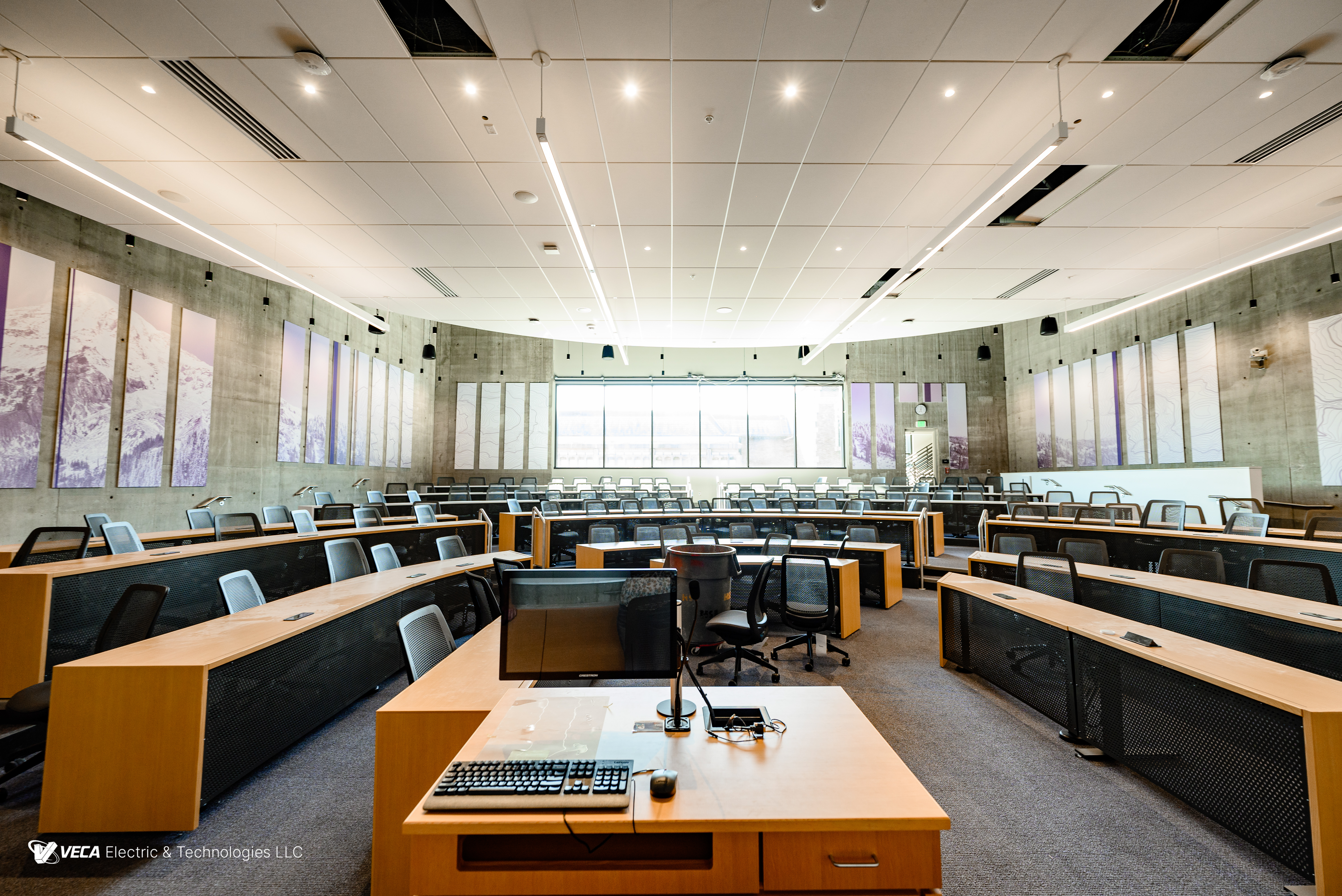How did you get started in the lighting industry?
I worked in the construction industry until 2020 when I moved to Seattle. I joined a lighting agency quoting, designing, and programming lighting controls. In that role I worked closely with local specifiers to design and implement systems to meet changing energy codes, and ensure contractors had all the information they needed to plan and install lighting control systems. My work has spanned a wide range of building types, including hospitals, commercial office buildings, high rises, warehouses, and others. I am now a project manager at VECA Electric & Technologies, helping plan and deliver construction projects and solving any problems that arise.
How did you come to discover Luminaire Level Lighting Controls (LLLC) as a solution for your clients?
LLLC just came across my desk. Lighting control codes drove many of my projects, and I started learning more about how the lighting system works and the intricacies of the design. With LLLC, my clients not only meet energy code and reduce energy use, but they also gain decreased upfront costs thanks to utility rebates and greater flexibility in the long run.
The LLLC projects were few and far between in the beginning, and mostly for commercial offices and educational facilities. LLLC is well suited for those types of environments, especially in commercial offices, where there are a lot of different people with diverse needs in those spaces. Now, we’re seeing a lot more LLLC projects come through.
How does LLLC help building managers and operators meet lighting control energy codes?
The biggest challenges are often the size of occupancy sensor zones and daylight sensor zones—LLLC allows a programmer to define any fixtures they need in the zone, which completely resolves these issues.
The flexibility of LLLC to adjust individual lights makes it simple and takes the complexity out of new energy codes. Individual lights can be set to different levels so the building owner doesn’t need to worry about having enough sensors or control zones as they can be configured as needed.
What do building owners and operators look for in a lighting controls system?
I’ve spoken with building operators on the maintenance of the lighting system and adjusting the lighting controls on many projects. One of the things I learned is that the more complexity you add to a lighting system, the harder it can be to maintain. When you have constant power to a fixture and a simple program to control the lighting system, it makes things a lot easier down the road. LLLC is wireless, so building owners and operators don’t have switch legs or external dimming wires, and it’s pre-programmed, streamlining installation. For areas with existing wiring or wiring buried in walls, LLLC is the easy button for getting that to work.
It’s also easy to troubleshoot if there’s an issue. If a fixture is not on, it likely doesn’t have power. You can get a new module, replace the light, and reprogram the system pretty quickly. With distributed relay systems, there can be an issue at the relay, the fixture, or programming down the line, making it more complicated to resolve.
How do you consider or incorporate utility rebates when specifying projects?
When you’re choosing light fixtures, it’s important to not only factor in the design of the space but also what rebates are available from the local utility. I’ve noticed utility rebates are not small for many of these fixtures and that really helps offset the cost of a lot of lighting packages. Some projects may have budget constraints, and these utility rebates can help cover the total expense. It’s important to reach out to the utility to make sure the fixtures meet the utility’s minimum requirements before applying for the rebate.
What should designers consider when thinking about incorporating lighting controls into their projects?
You want to design a beautiful light fixture that evokes a certain emotion, while also having advanced lighting controls. If those lighting controls are not intuitive, though, then it doesn’t matter how aesthetic your lighting fixture is. Lighting controls are impactful in how the light is perceived and how they’re designed and implemented. You need a lighting controls system that provides optimal light quality and is simple to use and maintain.
What is one LLLC project that stands out to you?
The University of Washington’s Foster School of Business built a new facility called Founders Hall, which focused on sustainable design and construction. The design team wanted minimal wiring to showcase the attractive exposed cross-laminated timbers.
With standard lighting controls, there can be a lot of wires involved, making it difficult to achieve a clean look in a given space. However, since LLLC is wireless, we were able to help achieve the design team’s streamlined vision for Founders Hall.
How do you position LLLC to clients?
Costs always seem to be the first priority, followed by flexibility. When I first started designing these systems, I had the opposite thought. I was focused on providing a system that would best work for the client.
Now that I work directly with owners, I understand most times it’s about getting the budget to work. LLLC offers the most value over time, not only from a performance perspective, but also with energy savings and utility rebates. Rising construction costs combined with more stringent energy codes are only going to make LLLC and its utility rebates more appealing.

